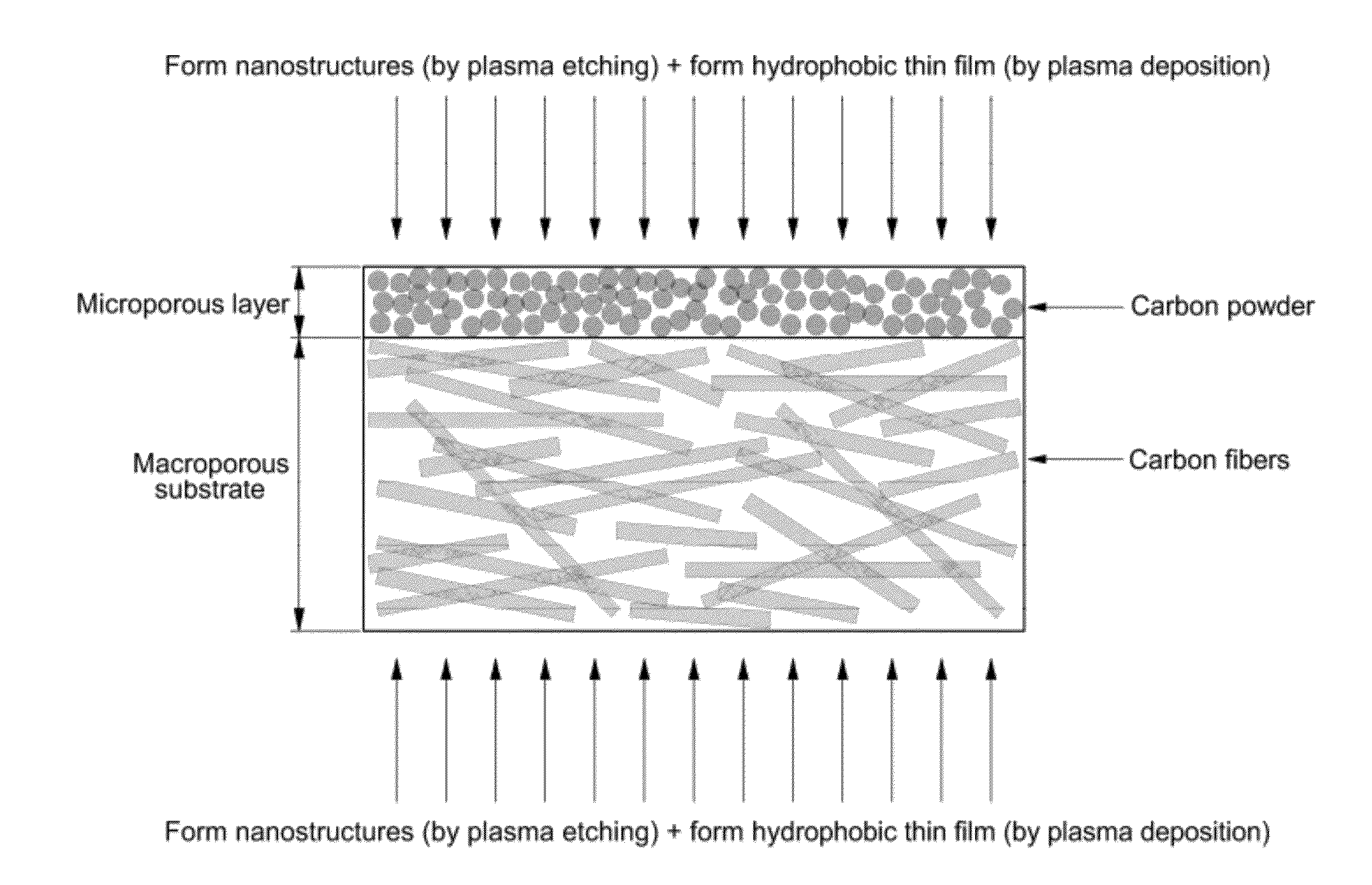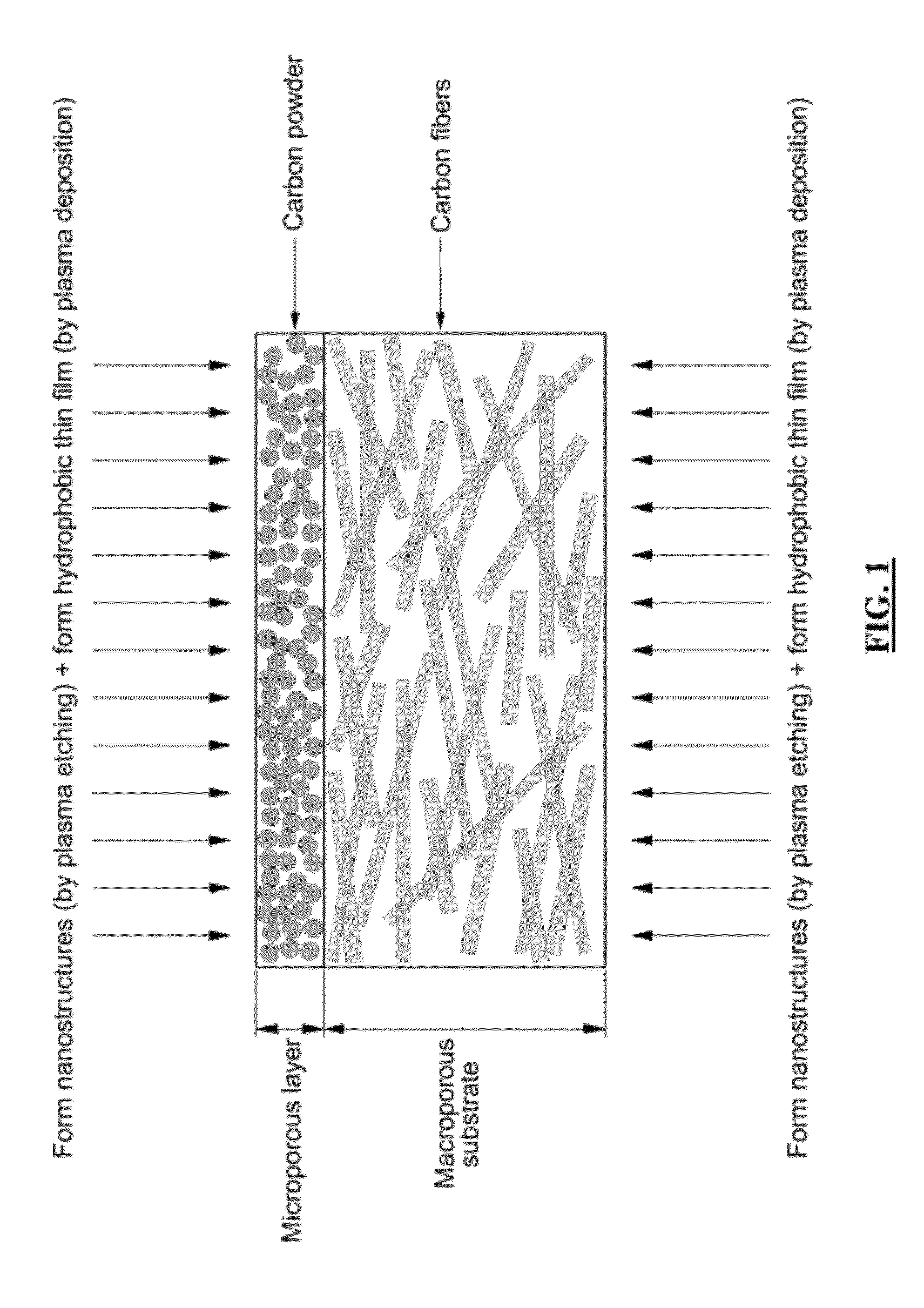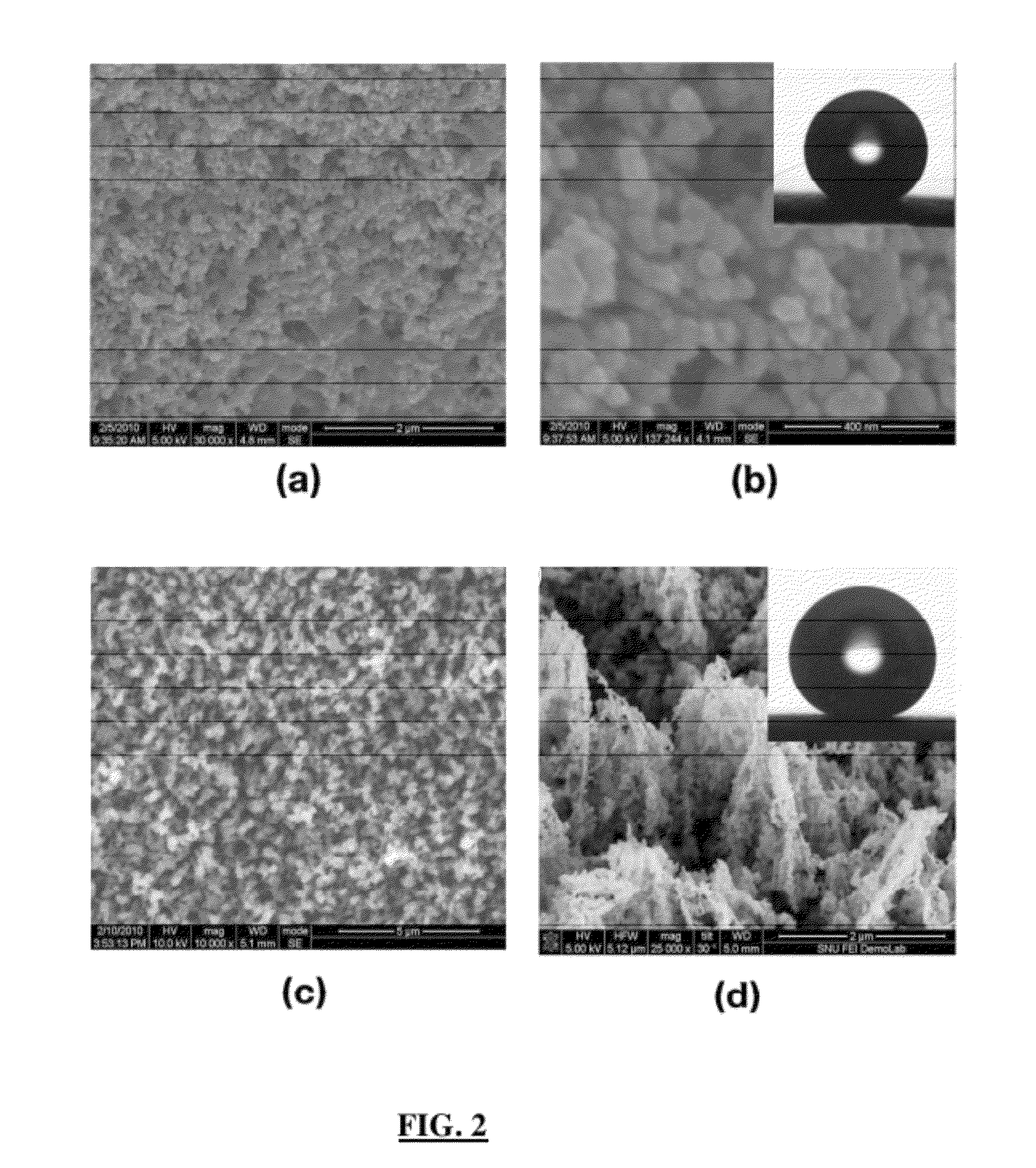Porous medium with increased hydrophobicity and method of manufacturing the same
a porous medium and hydrophobic technology, applied in the direction of sustainable manufacturing/processing, cell components, ways, etc., can solve the problems of increasing voltage loss, complex manufacturing process itself, and difficulty in uniform distribution of hydrophobic agents, and achieve the effect of increasing hydrophobicity
- Summary
- Abstract
- Description
- Claims
- Application Information
AI Technical Summary
Benefits of technology
Problems solved by technology
Method used
Image
Examples
example 1
Material for Microporous Layer with Increased Hydrophobicity
[0079]First, a commercially available gas diffusion layer material, which includes a microporous layer comprising carbon powder having a diameter of 10 to 300 nanometers and PTFE and a macroporous substrate comprising carbon fibers in the form of felt and PTFE, was used. However, a gas diffusion layer material with a macroporous substrate comprising only carbon fibers without a hydrophobic material such as PTFE may be applied to the present invention. The size of carbon particles forming the microporous layer in the gas diffusion layer material is not uniform and lies in the range of 10 to 300 nanometers.
[0080]The basic properties and characteristics of the gas diffusion layer used in this Example of the present invention are shown in Table 1. The entire thickness of the porous medium (i.e., gas diffusion layer) was obtained by the measurement of at least 20 times using a Mitutoyo thickness gauge (Mitutoyo Co., Japan).
[0081...
example 2
Material for Macroporous Substrate with Increased Hydrophobicity
[0093]The macroporous substrate on the other side (see FIG. 1) of the porous medium comprises carbon fibers in the form of felt and PTFE as a porous material interposed between the carbon fibers. Therefore, the contact angle of the macroporous substrate itself with respect to a droplet is about 135 to 145°. Moreover, the contact angle of the macroporous substrate is similar to that of the intrinsic microporous layer. The carbon fibers, which constitute the macroporous substrate, are provided in the form of felt, and the diameter of the carbon fibers are in the range of about 5 to 20 micrometers.
[0094]First, the surface of a prepared macroporous substrate was subjected to oxygen plasma etching treatment using RF-PECVD, and the oxygen plasma etching was performed under conditions where only oxygen was used as gas, the etching pressure was 10 Pa, and the RF voltage was −100 Vb to −800 Vb.
[0095]The oxygen plasma reacts with...
PUM
| Property | Measurement | Unit |
|---|---|---|
| Length | aaaaa | aaaaa |
| Length | aaaaa | aaaaa |
| Length | aaaaa | aaaaa |
Abstract
Description
Claims
Application Information
 Login to View More
Login to View More - R&D
- Intellectual Property
- Life Sciences
- Materials
- Tech Scout
- Unparalleled Data Quality
- Higher Quality Content
- 60% Fewer Hallucinations
Browse by: Latest US Patents, China's latest patents, Technical Efficacy Thesaurus, Application Domain, Technology Topic, Popular Technical Reports.
© 2025 PatSnap. All rights reserved.Legal|Privacy policy|Modern Slavery Act Transparency Statement|Sitemap|About US| Contact US: help@patsnap.com



